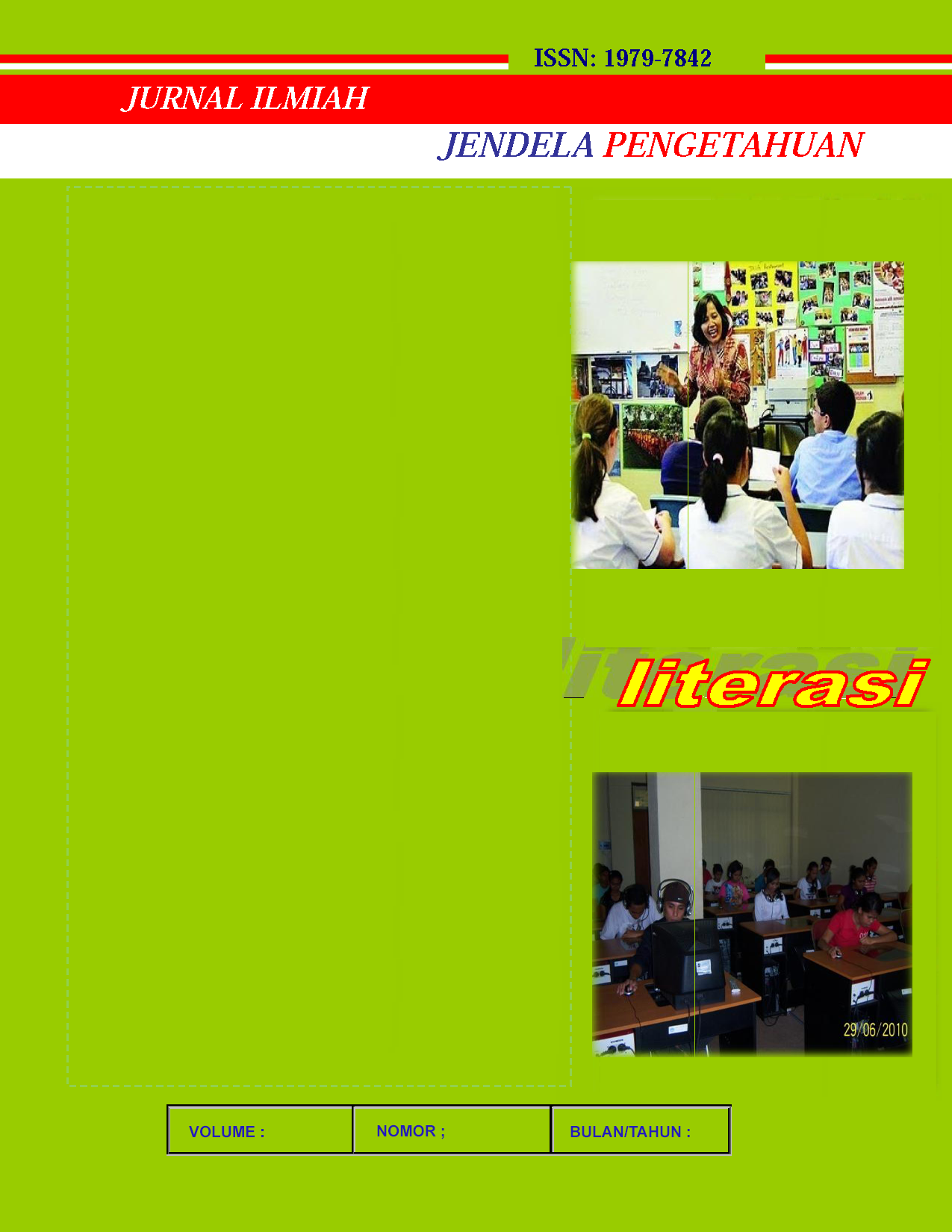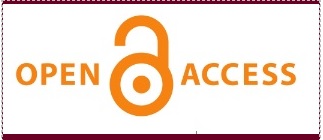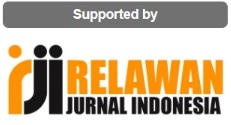The Influence of Road Distribution in Ambon City on the Availability of Access to Public Cemetery Routes
Pengaruh Distribusi Jalan di Kota Ambon Terhadap Ketersediaan Akses Jalur Pemakaman Umum
Abstract
This research aims to reveal the system and management of the Batu Merah Public Cemetery (TPU) in Ambon City, assess the condition of the road distribution in the Batu Merah TPU, and formulate strategies for managing the Batu Merah TPU in Ambon City. The research uses a qualitative descriptive method. The research variables include the principles of public cemetery arrangement as explained by Hutauruk (2010), involving key components such as: 1) Burial Plots (Space Arrangement, Identification, and Numbering), 2) Vegetation Elements (Gardens, Trees, and Plant Selection), 3) Pedestrian Paths (Accessibility and Lighting). Data collection methods in this study are observation, interviews, and documentation. The population in this research context refers to all objects related to the research problem. The population includes all individual cases and various phenomena within the Kebun Cengkeh TPU area. This includes the TPU management structure, existing graves, and the surrounding community associated with the public cemetery. A well-managed Public Cemetery (TPU) will have a positive impact on the community by fulfilling the need for burial spaces. Conversely, if the TPU is not well-organized and managed, it can have negative impacts such as environmental pollution. In Ambon City, the TPU can no longer accommodate more burials. The Ambon City Government needs to immediately realize the provision of new land and manage the TPU well so that community needs are met and social issues do not arise. The Ambon City Government also needs to establish Regional Regulations on the Arrangement and Management of Public Cemeteries to serve as official guidelines in managing TPUs in the city
Downloads
References
Anak, K. N. P. E. S. K. (2008). Eksploitasi Seksual Komersial Anak di Indonesia. Medan, Restu Printing Indonesia, Hal.57, 21(1), 33–54. https://doi.org/10.21831/hum.v21i1.
Budi, S., Thobroni, A. Y., & Toha, M. (2022). Esensi Kebersihan. Jurnal Asy-Syukriyyah, 23(2), 163–176. https://doi.org/10.36769/asy.v23i2.229
Fahrul, M., Siregar, Y. I., & Sukendi, S. (2021). Strategi ruang terbuka hijau pemakaman di Kota Pekanbaru. Jurnal Zona, 4(1), 33–39. https://doi.org/10.52364/jz.v4i1.30
Hutasoit, M. F., Dongoran, E. H., Pardede, B. P., Agama, I., & Negeri, K. (2023). Pemberdayaan dan Peningkatan Spiritualitas Masyarakat Partungko Naginjang yang belum sepenuhnya tergali . Tantangan dalam meningkatkan kesejahteraan. Pengabdian Kepada Masyarakat, 1(1), 9–17.
Kurniasari, E., Rustiadi, E., & Tonny, F. (2019). Strategi Pengembangan Ekowisata Melalui Peningkatan Partisipasi Masyarakat, Studi Kasus Komunitas Kelurahan Kalimulya Kota Depok. Jurnal Manajemen Pembangunan Daerah, 5(2). https://doi.org/10.29244/jurnal_mpd.v5i2.24637
Latifah, E. (2023). Tradisi Ziarah dalam Masyarakat Jawa Perspektif Filsafat Nilai Max Scheler. AN NUR: Jurnal Studi Islam, 15(1), 153–175. https://doi.org/10.37252/annur.v15i1.437
Lestari, F., Harun, M. R., & Indrayati, I. (2022). Identifikasi Karakteristik Lahan Pemakaman TPBU di Kota Tangerang Selatan. Journal of Regional and Rural Development Planning, 6(3), 195–211. https://doi.org/10.29244/jp2wd.2022.6.3.195-211
Leuwol, F. S., Kartiko, A., Nasar, I., Indrus, I., & Putra, T. (2023). The Influence of Educational Promotion and Brand Image on Students Decision to Choose Madrasah. 13, 90–100. https://doi.org/10.24269/muaddib.v13i2.7652
Lokal, P. W. (2024). Ruang Tempat Pemakaman Krapyak Sebagai Sumber Penghidupan Warga Lokal Sekar Djatmikojati 1 1,. 13(April).
Manghayu, A., Heny, A., & Nurdin, M. (2018). Manajemen Pemangku Kepentingan Dalam Ranah Pengambilan Keputusan Pemerintah Daerah. Jurnal Manajemen Pemerintahan, 5(2), 109–123.
Muin, A., & Rakuasa, H. (2023). Evaluasi Rencana Tata Ruang Wilayah Kota Ambon Berdasarkan Aspek Kerawanan Banjir. Ilmiah Multidisiplin, 2(5), 1727–1738.
Murdiyana, M., & Mulyana, M. (2017). Analisis Kebijakan Pengentasan Kemiskinan Di Indonesia. Jurnal Politik Pemerintahan Dharma Praja, 10(1), 73–96. https://doi.org/10.33701/jppdp.v10i1.384
Nayiroh, L., & Ema, E. (2024). Komunikasi Media Sosial Sebagai Alat Mobilisasi Gerakan Sosial Di Indonesia. Jurnal Ilmu Komunikasi UHO : Jurnal Penelitian Kajian Ilmu Sosial Dan Informasi, 9(1), 221–238.
Nofitasari, S. A. U., & Supatra, S. (2022). Pemakaman Vertikal Sebagai Tipologi Baru. Jurnal Sains, Teknologi, Urban, Perancangan, Arsitektur (Stupa), 4(1), 283. https://doi.org/10.24912/stupa.v4i1.16895
Norfaizi, H., Hassanah, D. N., & Ichsan, I. N. (2023). Telisik Kisah Tersembunyi dari Tanah Teritorial Belanda di Bandung: Ereveld Pandu dan Leuwigajah. MUKADIMAH: Jurnal Pendidikan, Sejarah, Dan Ilmu-Ilmu Sosial, 7(2), 502–513. https://doi.org/10.30743/mkd.v7i2.7821
Purnomo, B. H., Rusdianto, A. S., & Hamdani, M. (2019). Desain Tata Letak Fasilitas Produksi pada Pengolahan Ribbed Smoked Sheet (RSS) di Gunung Pasang Panti Kabupaten Jember. Jurnal Agroteknologi, 7(2), 167–177.
Putri, A. A., & Sabir, M. (2023). Pembongkaran dan Pemindahan Mayat Perspektif Mazhab Al- Syafi ’ i dan Mazhab Hanbali ; Studi Perbandingan. 04(3), 885–895. https://doi.org/10.24252/shautuna.v4i3.32837
Rijali, A. (2018). Analisis Data Kualitatif Ahmad Rijali UIN Antasari Banjarmasin. 17(33), 81–95.
Riswinarno. (2018). Tata Ruang dan Keruangan Kompleks Makam Kota Gede (Sinkretisasi Budaya Jawa dengan Islam). Thaqafiyyat, 19(2), 186–213.
Riyanto, M., & Kovalenko, V. (2023). Partisipasi Masyarakat Menuju Negara Kesejahteraan: Memahami Pentingnya Peran Aktif Masyarakat Dalam Mewujudkan Kesejahteraan Bersama. Jurnal Pembangunan Hukum Indonesia, 5(2), 374–388. https://doi.org/10.14710/jphi.v5i2.374-388
Sitorus, C. S., Lengkong, F. D. J., & Palar, N. R. (2023). Pengelolaan Sanitasi pada Fasilitas Publik di Dinas Kependudukan dan Pencatatan Sipil Kota Manado. Jurnal Administrasi Publik, IX(2), 40–51.
Tahyudin, M. S., Iskandar, A., & Saleh, M. Y. (2015). Analisis Strategi Pemerintah Kota Bogor Dalam Mengelola Tempat. Jurnal GOVERNANSI, 1(2), 101–110.
Wulandari, A. (2014). Kajian Potensi Pemakaman Sebagai Ruang Terbuka Hijau Perkotaan, Studi Kasus: Tpu Kota Pontianak. Langkau Betang: Jurnal Arsitektur, 1(2), 54–64. https://doi.org/10.26418/lantang.v1i2.18800
Yasin, R. Al, & Salsabila, N. (2022). Jurnal Layli. 1(4).
Zain, Z., Irwin, I., Andi, U. F., & Putro, J. D. (2020). Program Pendampingan Disain Kawasan RTH dan Resapan Air di TPU Muslim Al-lkhlas Kelurahan Sungai Bangkong Kota Pontianak. Dinamisia : Jurnal Pengabdian Kepada Masyarakat, 4(3), 509–518. https://doi.org/10.31849/dinamisia.v4i3.3916
Copyright (c) 2024 Habisi Ramean, Melianus Salakory, Mohammad Amin Lasaiba

This work is licensed under a Creative Commons Attribution 4.0 International License.
















